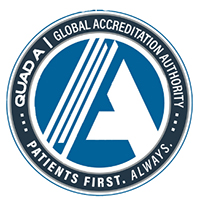Home » Refractive Lens Exchange
Refractive Lens Exchange
Refractive lens exchange (also called clear lensectomy) is a procedure whereby the natural lens of the eye is removed and an artificial acrylic lens implant is placed inside the eye. This surgery is essentially the same procedure performed when somebody undergoes cataract surgery. However in cataract surgery the lens has already become cloudy or opaque.
Candidates
Refractive lens exchange is considered for patients who have moderate to high degrees of nearsightedness or farsightedness which are beyond what is treatable by LASIK or PRK. Patients generally are over 40 years old and are beginning to lose some of their near vision. Refractive lens exchange is also considered in older adults who are seeking LASIK but may be showing the first signs of cataract and therefore are not good candidates for LASIK or Kamra inlay.
The Procedure
The procedures performed in the office using topical anesthetics and light oral sedation. The procedure takes approximately 10 to 15 minutes. In most cases patients’ vision rapidly improves and within about 24 to 48 hours patients are often back to working and driving.
Surgery is performed on just one eye at a time with an approximate 2 to 4 week lag time between each eye.
Your safety is our primary concern. The surgery is performed in our in-office surgical suite which is AAAASF certified.
As with any surgery, complications though rare can sometimes occur. This includes retinal tear or detachment, high or low pressure in the eye, hemorrhage, infection or in very rare cases, reduced or loss of vision. The decision to proceed with a clear lensectomy should be made with your physician and only after a thorough eye exam to evaluate for any eye diseases which may need to be treated prior to refractive lens exchange.
Lens Implant Technology
New technology lens implants can be combined with refractive lens exchange to correct not only nearsightedness or farsightedness but also astigmatism and presbyopia.
Presbyopia or loss of near vision with age is corrected with trifocal or extended depth of focus (EDOF) lens. We generally recommend to patients the Alcon Panoptix Trifocal or the Vivity EDOF or the Johnson & Johnson Eyehance IOL’s.
Frequently Asked Questions









